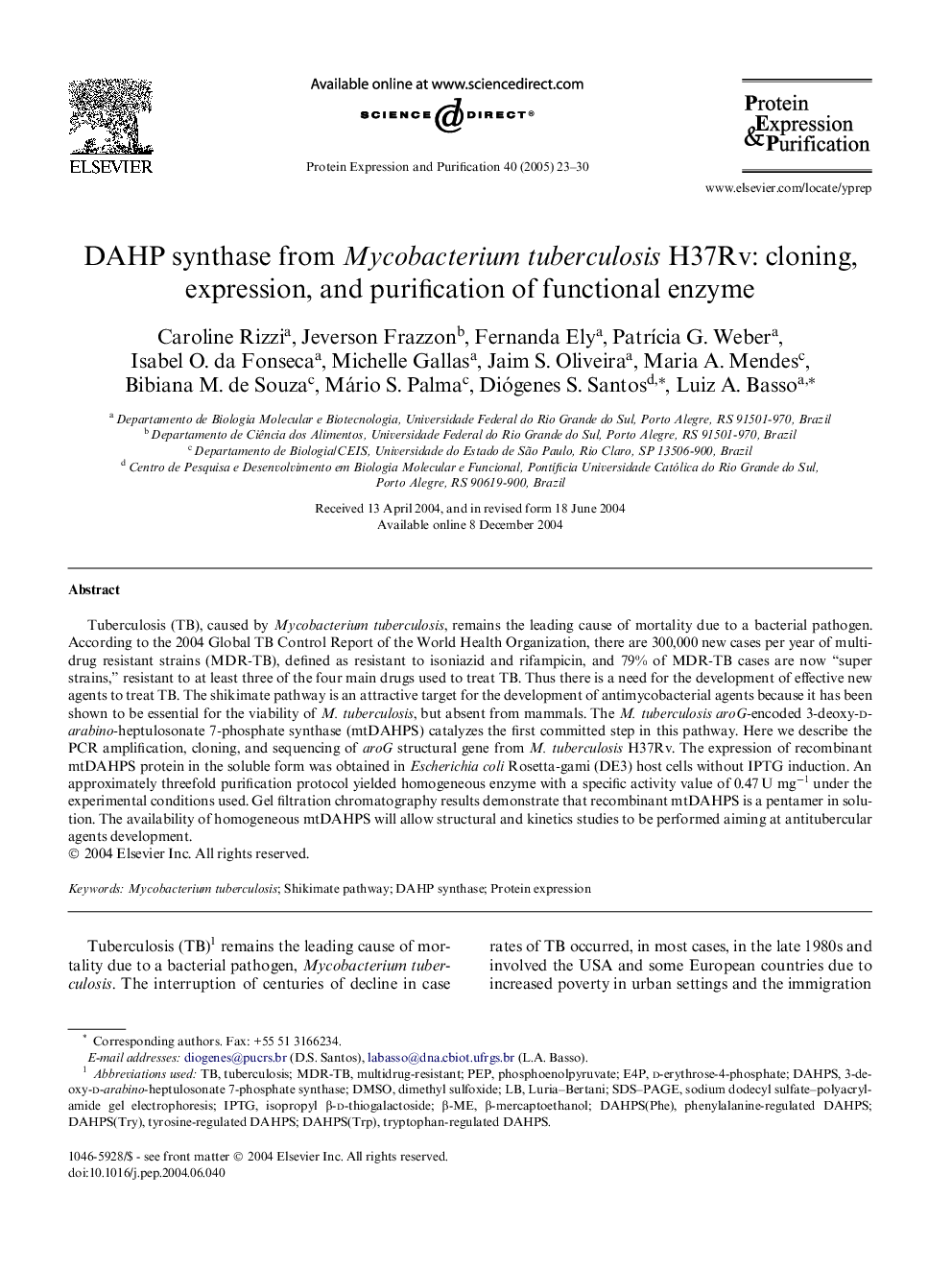| Article ID | Journal | Published Year | Pages | File Type |
|---|---|---|---|---|
| 10843506 | Protein Expression and Purification | 2005 | 8 Pages |
Abstract
Tuberculosis (TB), caused by Mycobacterium tuberculosis, remains the leading cause of mortality due to a bacterial pathogen. According to the 2004 Global TB Control Report of the World Health Organization, there are 300,000 new cases per year of multi-drug resistant strains (MDR-TB), defined as resistant to isoniazid and rifampicin, and 79% of MDR-TB cases are now “super strains,” resistant to at least three of the four main drugs used to treat TB. Thus there is a need for the development of effective new agents to treat TB. The shikimate pathway is an attractive target for the development of antimycobacterial agents because it has been shown to be essential for the viability of M. tuberculosis, but absent from mammals. The M. tuberculosis aroG-encoded 3-deoxy-d-arabino-heptulosonate 7-phosphate synthase (mtDAHPS) catalyzes the first committed step in this pathway. Here we describe the PCR amplification, cloning, and sequencing of aroG structural gene from M. tuberculosis H37Rv. The expression of recombinant mtDAHPS protein in the soluble form was obtained in Escherichia coli Rosetta-gami (DE3) host cells without IPTG induction. An approximately threefold purification protocol yielded homogeneous enzyme with a specific activity value of 0.47Â U mgâ1 under the experimental conditions used. Gel filtration chromatography results demonstrate that recombinant mtDAHPS is a pentamer in solution. The availability of homogeneous mtDAHPS will allow structural and kinetics studies to be performed aiming at antitubercular agents development.
Related Topics
Life Sciences
Biochemistry, Genetics and Molecular Biology
Biochemistry
Authors
Caroline Rizzi, Jeverson Frazzon, Fernanda Ely, PatrÃcia G. Weber, Isabel O. da Fonseca, Michelle Gallas, Jaim S. Oliveira, Maria A. Mendes, Bibiana M. de Souza, Mário S. Palma, Diógenes S. Santos, Luiz A. Basso,
